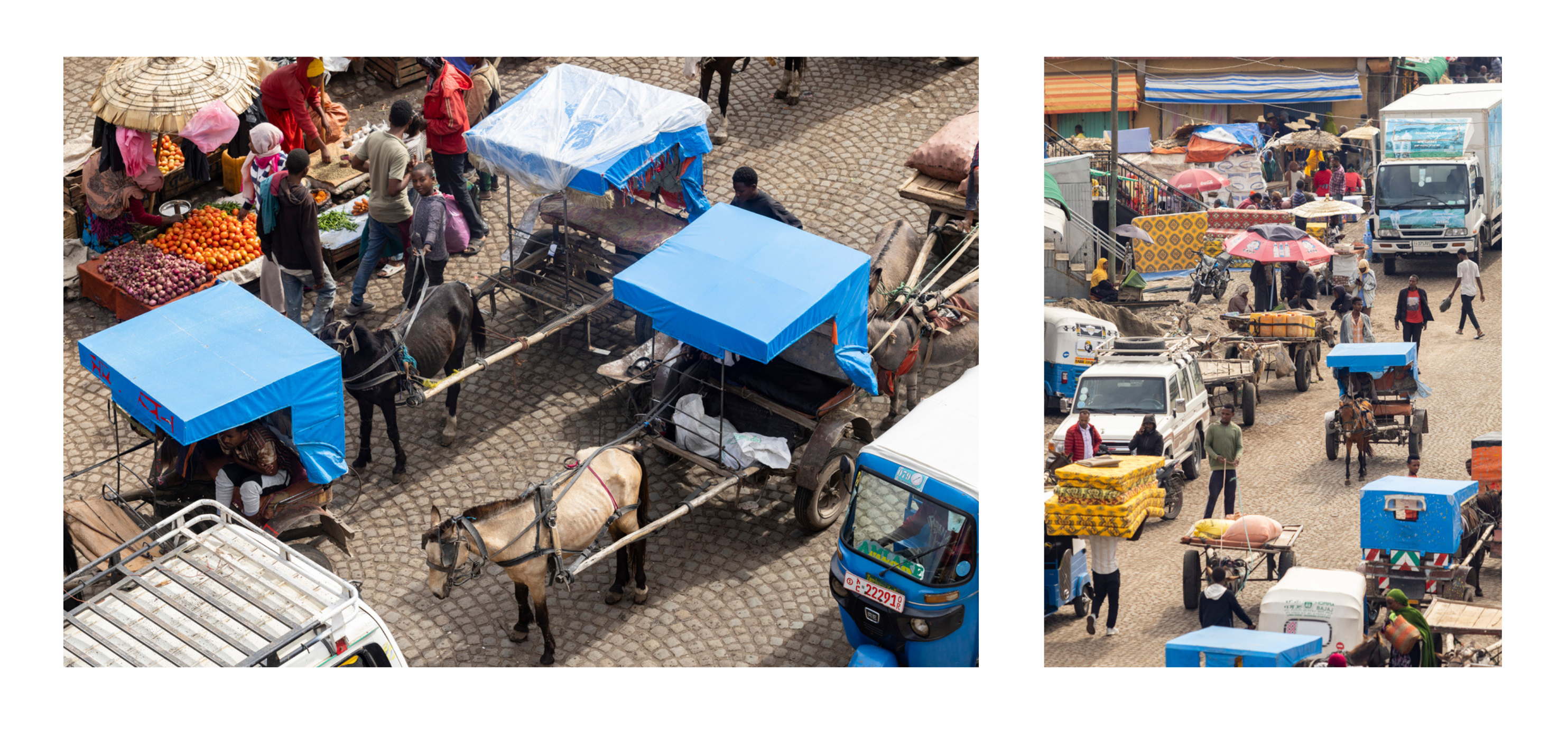Images and photography
Brooke’s photography portrays real-world examples of working horses and donkeys in challenging environments.
Ethical animal photography best practices
- Do not use imagery that exploits the mistreatment of animals.
- Caption photos without sensational language. Use facts, not feelings.
- Do not take or use staged photographs of mistreated animals.
Image capturing best practices
Expectations of animal welfare knowledge
Individuals within FundComm are responsible for ensuring their knowledge relating to animal welfare is up to date and sufficient (as is relevant for their role). Basic competencies expected include having ability to:
- Identify whether an animal is being humanely handled.
- Determine whether an animal is a horse, donkey or mule and seek clarification if uncertain.
- Using basic equine behaviour knowledge to identify whether an animal is having a positive or negative experience and use/caption images accordingly (e.g. equids with ears flattened back should not be captioned as ‘happy’ or ‘relaxed’.)
- Understand and identify common welfare problems and typical causal factors.
- Explain on a basic level the way Brooke does, and does not, work and why.
- Identify and utilise only facts which can be supported with evidence from a reliable source.
Just because an image was used previously in any communications, media, or is held in Brooke’s image repository does not mean it depicts best practice or is suitable for all purposes. FundComm staff must use their competency in animal welfare to make an appropriate decision every time an image is used, and seek clarification if uncertain.
Animal welfare advisors can provide guidance on what an animal is experiencing in images, the message being conveyed, and make recommendations about use of the image, but ultimately it is the responsibility of FundComm staff to ensure an image is appropriate for the intended purpose and Brooke’s values, and to be accountable for any repercussions from its external use.
Animals featured with Brooke staff must:
- Be handled in a calm, gentle and controlled manner i.e. not moving away/trying to escape, appearing overly fearful or prevented from normal breathing by a hand covering the nostrils.
- Wear an appropriately sized halter/head-collar (not loose or in the animal’s eyes). Ideally, handlers should hold the lead rope and not grip the halter or part of the animal’s body.
- Be kept at a safe distance if unrestrained or nearby if equally well restrained (i.e. halter); foals are the exception and may accompany their mother without restraint (regarding equines).
Staff should be featured:
- Wearing closed-toe footwear and appropriate protective clothing for the procedure.
- Paying attention to the animal – not looking off into the distance.
Community members/onlookers should be featured:
- Observing animals from a safe distance – twice the length of the animal.
- Observing from the side of the animal rather than from behind the hind-limbs.
Environment should be featured with:
- The ground free from tangled ropes, equipment or other hazards.
Animals should never be purposely loaded, stopped while loaded, or asked to carry a load longer or farther for the purposes of capturing a photo or video. Staff should never be examining or treating an animal whilst loaded. It is not Brooke’s aim to ever increase an animal’s burden! Images depicting any of these scenarios should not be used.
Images aiming to capture ‘real life’ scenarios without Brooke staff may include situations and human behaviours which are bad for the animal’s welfare and may not meet the standards listed above. It is possible to utilise these types of images but an accompanying explanation should always be given about what Brooke is doing/has done to help the animal so the impression is not given that we stand by capturing images while animals suffer.
Animal welfare considerations in images
Image suitability checklist
Consider each aspect below in relation to the use of each image and accompanying messaging.
Images showing animal welfare problems and harsh working/living conditions are acceptable to capture and use provided animal welfare has not been compromised to obtain them, and they are used to illustrate animal welfare need and explained accordingly.
| Consideration | Questions | Notes |
| Animal behaviour | - What is the animal doing and how is their posture, facial expression, body language and demeanour? - What does this convey about the animal’s emotional state? - How is the animal behaving towards any humans, animals or other stimuli in the surroundings? | - Capturing Good Practice has more information about interpreting equine behaviour in images. - If unsure about interpreting behaviour, seek advice from a colleague experienced in equine handling. |
| Animal restraint and comfort | - How is the animal being restrained and controlled (if relevant)? (E.g. head-collar, limb hobbling, neck tether, harness, human.) - How comfortable and safe does the restraint appear? Is it likely to cause excessive pressure, pain or injury? - Does the restraint appear suitable for the circumstances? - What factors are affecting the animal’s thermal and physical comfort? E.g. weather, harnessing, work activities, load. - To what extent is the animal’s comfort being addressed? | - Staged images should never feature animals restrained uncomfortably. (E.g. with very tight restraint or pressure, ropes around the limbs, movement severely restricted.) |
| Human-animal interaction (or lack thereof) | - How are any humans behaving towards the animal? (E.g. aggressively, gently, indifferently, attentively.) - Is there a mismatch between the animal and human behaviour? | - Consider the behaviour of Brooke representatives, owners/users, community members, children, animal health practitioners and others in the surroundings. |
| Animal welfare status | - Which aspects of the animal’s welfare are positive? - Which aspects of the animal’s welfare are negative? - To what extent are negative aspects of welfare being addressed? | - Welfare Interpretation Manual has information about common welfare issues. - It is not permitted to artificially edit/manipulate welfare status in images to appear better or worse. - Animal welfare must never be compromised for capturing images. |
| Safety | - Are there any safety risks to animals in the surrounding environment? - Are there any safety risks to humans in the surrounding environment? - To what extent are safety risks being addressed? | - Consider danger from animals (e.g. children standing where they may be kicked); equipment or tools; harnessing or ropes; debris on the ground; traffic; unstable ground surface; etc. - Safety of animals or humans must never be compromised for capturing images. |
Ultimate question: Having considered the checklist and questions above, does the image convey the appropriate message for this particular communication? Consider on a case-by-case basis.
Photographic style
Real life, natural, editorial, physical
Storytelling
We have a complex story to tell, so it is often helpful to see multiple images rather than trying to find one image that tells the whole story.
This is an additional technique and also adds to the sense that we tell current, live stories.
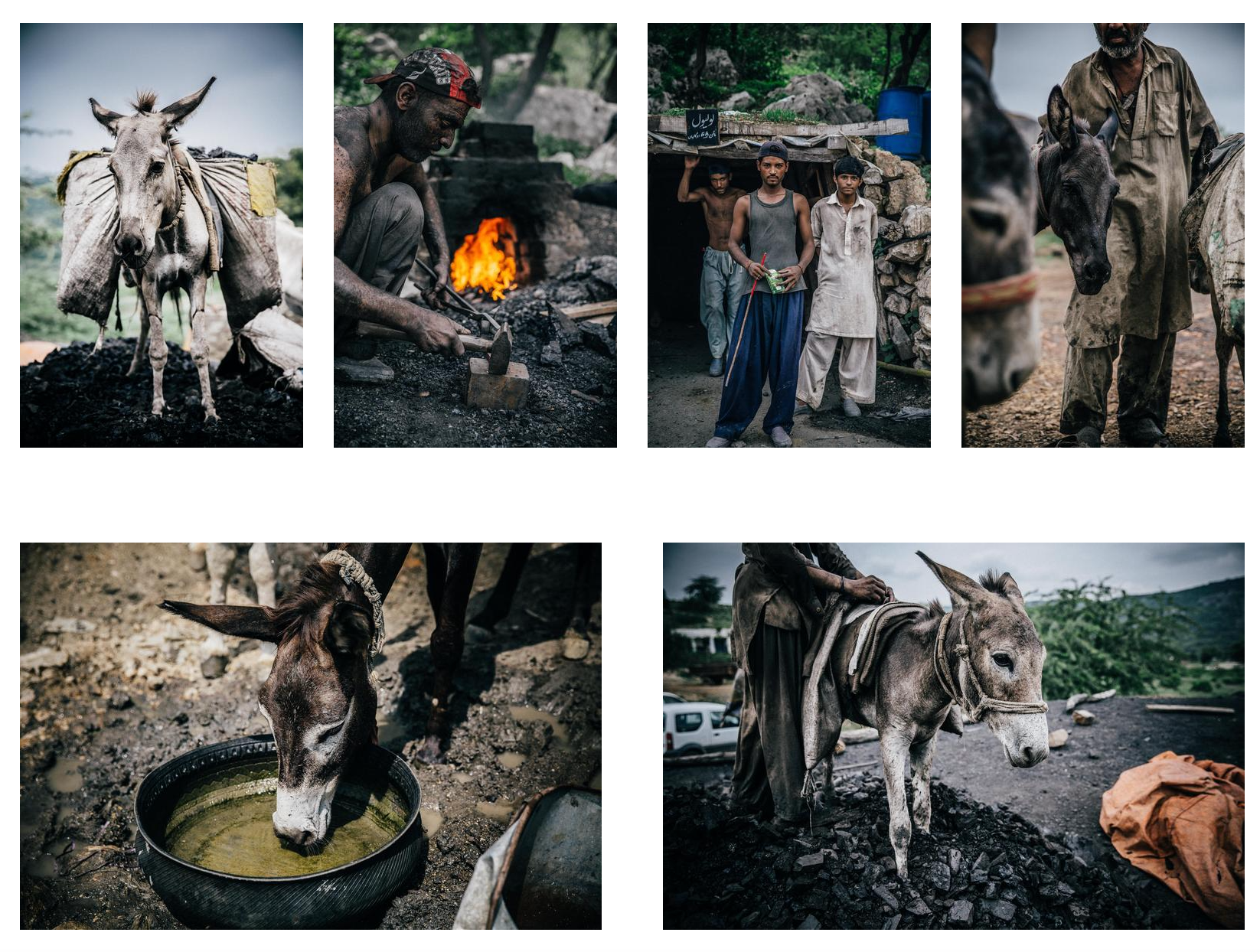
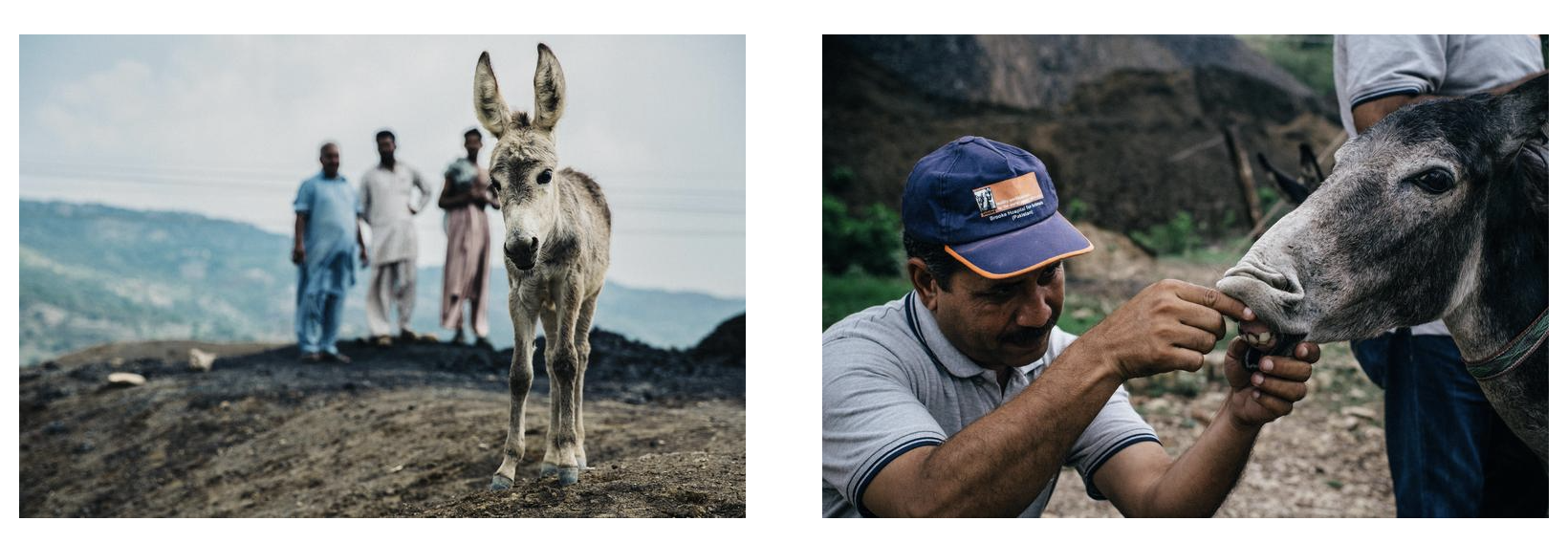
Example case study – Kasim and Boka – Ethiopia
In its simplest terms, two photos encapsulate the change that has taken place here – thanks to Brooke’s work, Boke has made almost a full recovery from wounds and malnutrition.
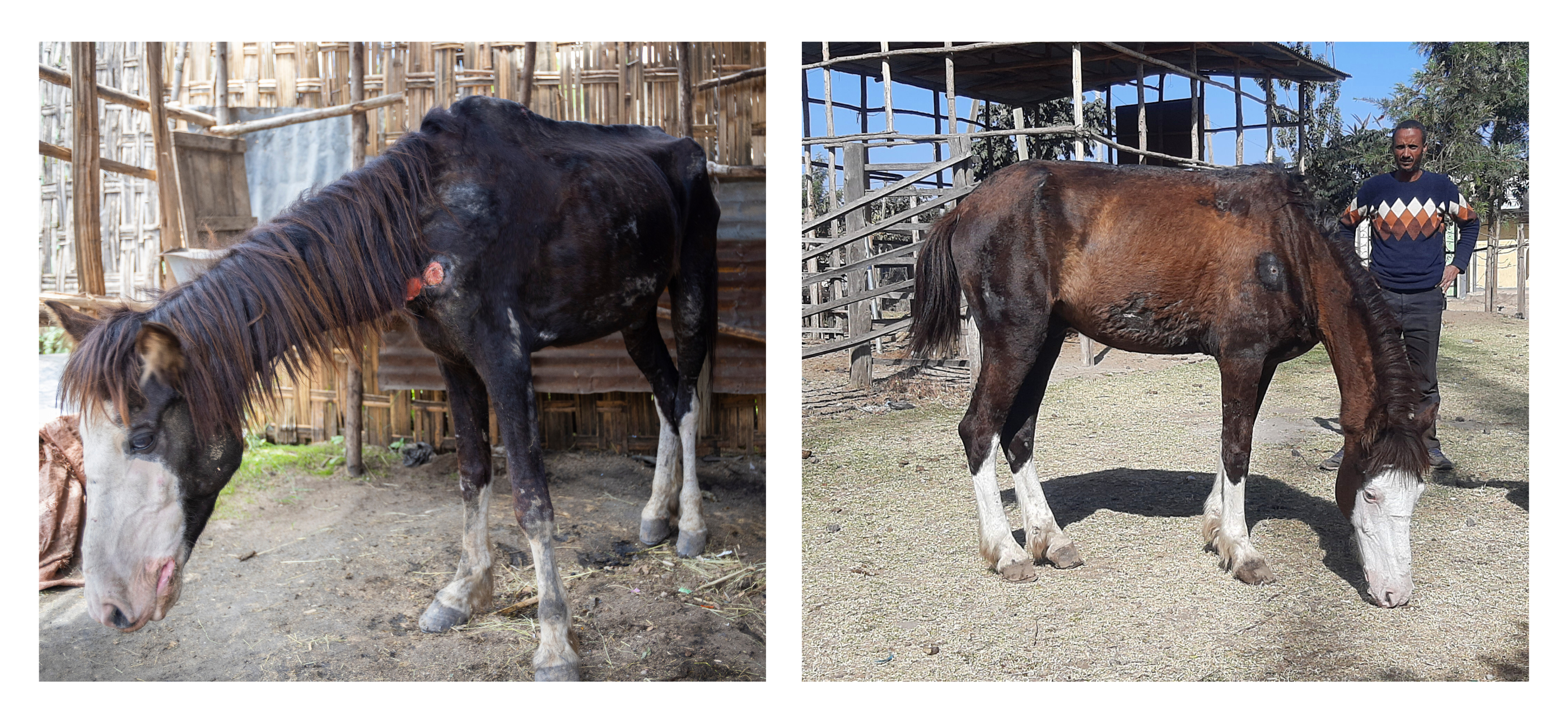
However, there is often more detail available for the story to enhance a piece of content, such as the relationship between Kasim and Boka, causes for bad welfare conditions, and the working environment for animals.

The bit that caused the uclers in Boka’s mouth, left, and the better bit design that Brooke Ethiopia is introducing.

Kasim wants to provide a better life for Boka, but struggles with the limited resources available in his community.
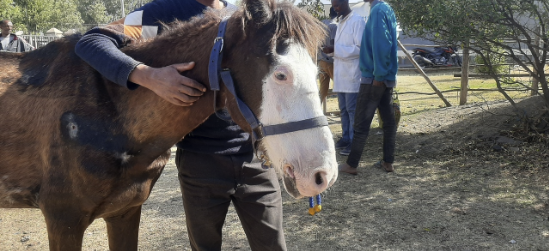
A search in Webdam for Shashemene, the market town where Kasim and Boka work, brings up other information and photos that give your audiences more context of Boka’s life.
